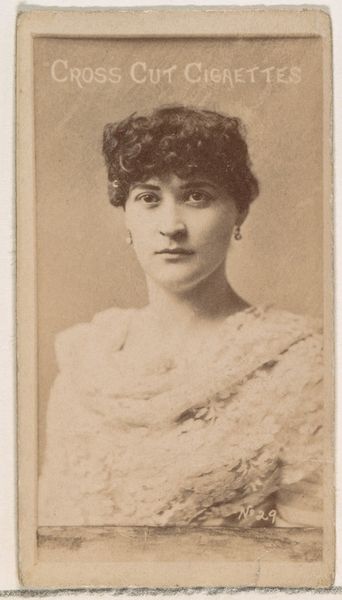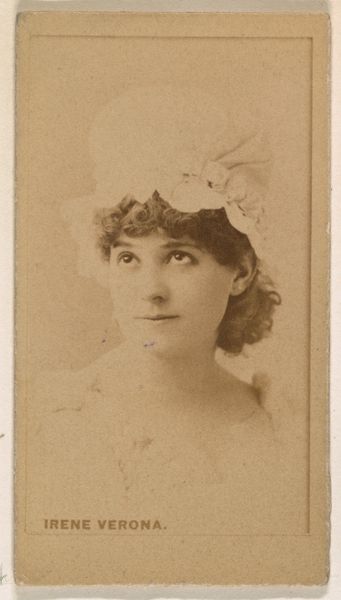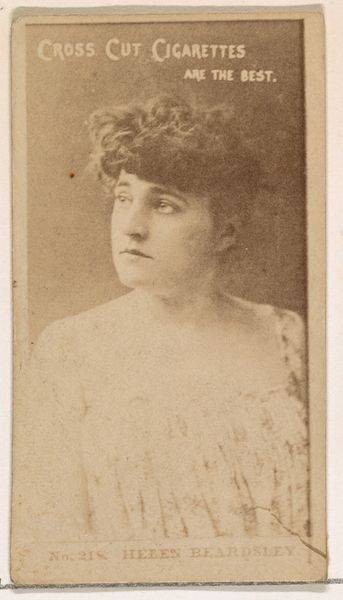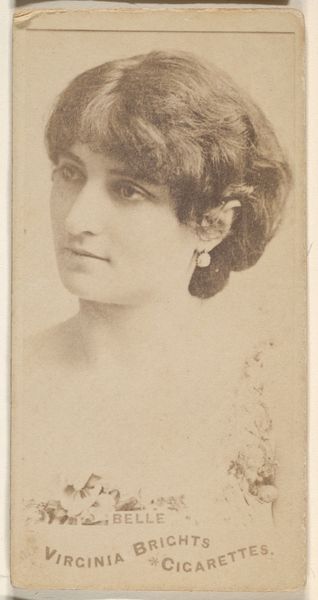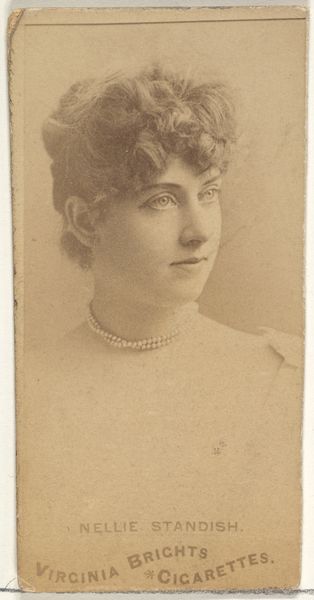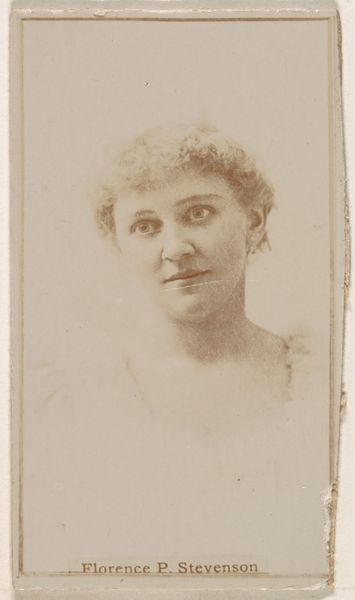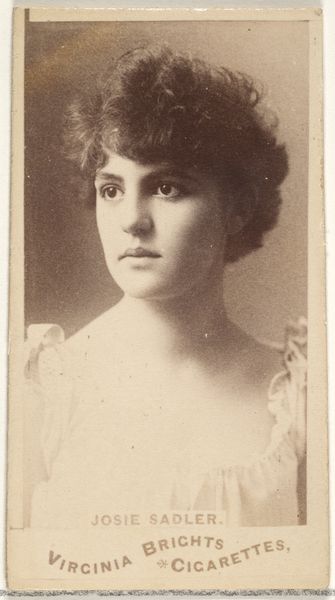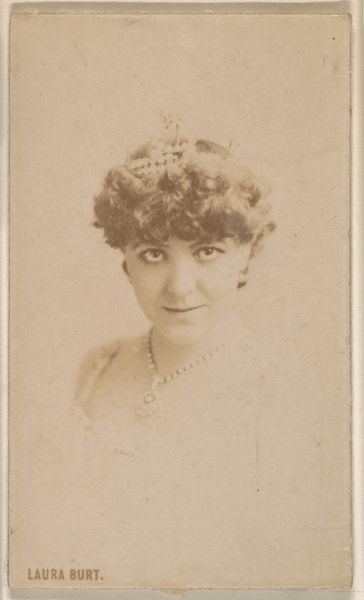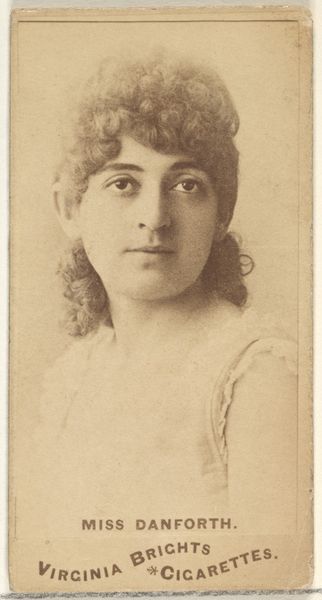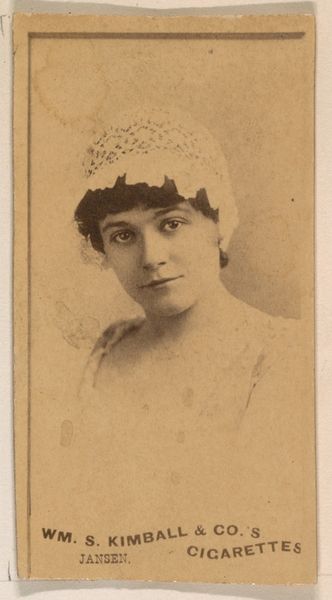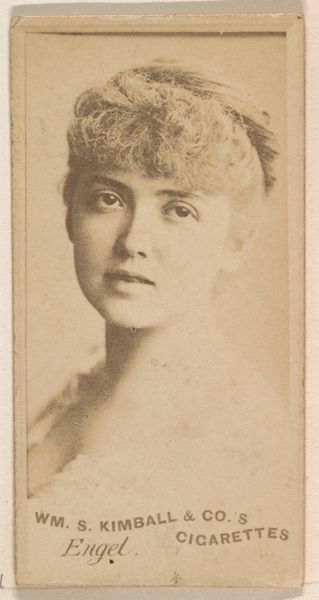
Card Number 29, Miss Miller, from the Actors and Actresses series (N145-2) issued by Duke Sons & Co. to promote Cross Cut Cigarettes 1880s
0:00
0:00
drawing, print
#
portrait
#
photo of handprinted image
#
drawing
#
aged paper
#
toned paper
# print
#
charcoal drawing
#
possibly oil pastel
#
tea stained
#
charcoal art
#
underpainting
#
men
#
watercolour illustration
#
watercolor
Dimensions: Sheet: 2 5/8 × 1 7/16 in. (6.6 × 3.7 cm)
Copyright: Public Domain
Curator: This portrait exudes an almost spectral elegance. Editor: Spectral indeed. We're looking at card number 29, "Miss Miller", from the Actors and Actresses series, a promotional item issued by W. Duke, Sons & Co. in the 1880s for Cross Cut Cigarettes. Curator: The limited tonal range creates a very focused image. It’s interesting how the artist directs the viewer's gaze right to Miss Miller's face. There's something captivating about its symmetry and slight remove. Editor: And that it’s not some grand oil painting but rather a commercial print is what makes this so fascinating. These cards were mass-produced, utilizing cheaper materials and labor. Imagine the contrast: these tiny, decorative art pieces promoting such vice. How does this context influence our perception of it as "art"? Curator: True, yet there is undeniable artistic intention behind the choices made in the portrait. The delicate shading that gives her shawl volume, the carefully placed highlights catching the light on her earrings. Each aspect is deliberately designed. Editor: I think about the actual laborers—often women and children—involved in printing these cards. To what extent does their exploitation and their circumstances feed into our aesthetic evaluation of a society's image production? And also: tobacco production and exploitation abroad! The networks and human cost embedded into these promotional cards... Curator: Fair. Yet the aesthetic design, its symmetry and tonal range...it has a certain impact that is undeniable and somewhat overrides, in my view, that sad context of labour. Editor: Yes, this miniature acts as a tiny time capsule. One of capitalist networks that created celebrity, material production, and, of course, our cultural understanding. Curator: The portrait engages the gaze, its inherent design offering a glimpse into another era. It's intriguing how form and function intertwine, giving us something so simple, yet still thought-provoking. Editor: Indeed, there's a complex relationship between industry and artistry within these commercial prints. It encourages us to reflect not just on how artwork is structured and created but also how materials come into production networks and even function within consumer cultures.
Comments
No comments
Be the first to comment and join the conversation on the ultimate creative platform.
